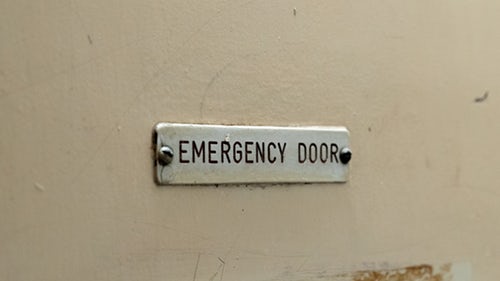A recent Greater Good Science Center on-line magazine article really caught my attention. Although the post’s title, “Three Emerging Insights About Happiness,” could have been a ho-hum trigger, the email subject line snagged me:
“How Being Alone Can Make You Happy.”
I perked up and quickly clicked through.
Why?
Because I tend to like being alone, even though I extol the virtues of socializing.
I know. That sounds disingenuous and a little dishonest. But it’s true.
Let me explain.
Although many people would swear on a Bible that I’m a total extrovert, I’m not. In fact, I’ve taken several personality tests—including one when I entered graduate school eons ago, and another one maybe a handful of years ago—that indicated I was borderline sometimes-extrovert, sometimes-introvert. It just depended upon my mood and the social situation. And it still does.
Maybe my initial college introversion came more from being insecure about whether or not I actually deserved to be attending graduate school where I was; and being downright terrified about whether I had the brains to actually be successful in graduate school.
I loved socializing and could chat up a storm (still can) and can easily and comfortably work my way around and through groups of people. But I grew up an only child and learned to spend a lot of time alone. Spending hours in a gym, working out alone (with just my dad or another coach) simply re-enforced my aloneness. I didn’t always like it, (I often loathed the isolation); and it made it difficult to develop friendships, but I learned and adapted.
As a writer, I spend hours alone in a VERY quiet house every day, except when my Shetland sheepdog Dolly ruins my eardrums barking.
So with all of that in mind, I read the article with tremendous interest, trying to glean insights for those of you who would like to spend time alone, learn to spend time alone, need time alone, and would love to know what benefits you can get from that alone time.
Greater Good Magazine managing editor, Kira Newman, highlighted three main (revelations-to-her) takeaways from her recent excursion to Melbourne, where researchers from over 60 countries gathered for the International Positive Psychology Association’s 6th World Congress. She said that the findings the researchers shared “added depth and complexity to our understanding of major keys to a flourishing life.”
Newman went on to say that attendees heard about when kindness makes you happier, and when it doesn’t. Now the latter part of that statement in itself—especially with the “Be Kind” movement in full swing—is a revelation for many.
She also noted:
“Researchers also addressed modern obstacles to happiness—from the way we’re hooked on technology to a widespread sense of disconnection and loneliness.”
Defining positive solitude—
It is well known that social connection is one of the keys to happiness and longevity. For many, feelings of being separated from others—on the outside or forgotten—equals loneliness and disconnection.
But a group of researchers—Martin Lynch, Sergeyt Ishanov, and Dmitry Leontiev—at Russia’s National Research University Higher School of Economics—have investigated “the phenomenon of positive or ‘productive solitude.’”
Newman asks,
“Does solitude have to be a negative experience? Can time alone feed our well-being?”
She explains that positive, or productive solitude is in contrast with the more unpleasant experience of being alone.
“Productive solitude doesn’t occur because we fell disconnected from others; it’s something that we deliberately seek out.”
Productive or positive solitude is when we use the solitary time not for negative ruminating or feeling sorry for ourselves because we’re alone, but using the time for
- Contemplation
- Reflection, or
- Creativity
In other words, it’s time spent being intentionally productive engaging in something that will enrich your life physically, emotionally, mentally, or spiritually.
The benefits of productive (positive) solitude—
Researchers note that people who practice periods or times of positive solitude tend to feel more positive emotions, like:
- Relaxation
- Calm
- Greater pleasure
- Greater meaning
- Less of a sense of void in their lives.
Who benefits most from productive (positive) solitude?
It’s not surprising to learn that introverts tend to benefit most from practicing productive solitude. After all, introverts easily tire from too much social stimulation, or having to socialize with large groups of people, and get re-energize with alone time.
But another group also benefits:
Those who enjoy emotional and psychological maturity.
Would you count yourself in that category—an emotionally and psychologically mature person?
That’s one of the primary goals of my website, which hosts this blog—for all of us to grow into emotional, psychological (and spiritual) maturity.
Tips for achieving positive solitude effects—
- Deliberately schedule alone time to do something you enjoy, without interruption.
- Spend solitary time in a peaceful setting, like nature.
- Disconnect from social media, turn off your phone and computer, tuck them away and focus on something else—like prayer, drawing, meditating, stretching, thinking, daydreaming, doodling, coloring. Even cleaning out a room or closet can reap positive solitude rewards, especially if that chaotic space makes it difficult for you to feel peace and tranquility or achieve any type of productivity.
What positive/productive solitude isn’t—
Positive solitude isn’t time spent alone doing regular work or trying to catch up on office demands.
Deterrents to positive solitude—
If you aren’t used to practicing positive solitude, you may find your normally busy or over-stimulated brain challenged, and rebelling. The brain loathes change and habit-correction.
But persevere! It may take you a few attempts (or many) to discover what you’d like to do during your alone time, or determining what activity gives you the most bang-for-your-time buck.
- If you must, set up a positive solitude reward. Your choice.
- Deliberately schedule alone time for doing something you enjoy.
- Think of it as time spent cultivating new attitudes, and growing happier!
Again, persevere!
Happiness gained from positive solitude awaits you!
NEXT WEEK: What does “feeling active” have to do with your happiness factor?
If you have any tips for other readers on how you spend positive solitude time, please share them, so we can grow and explore together!
Until next week, enjoy your solitude.
Blessings,
Andrea
Andrea Arthur Owan is an award-winning inspirational writer, fitness pro and chaplain. She writes and works to help people live their best lives—physically, emotionally, and spiritually.




